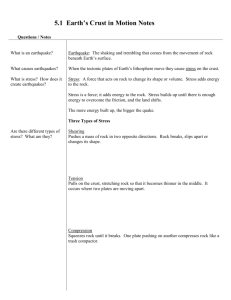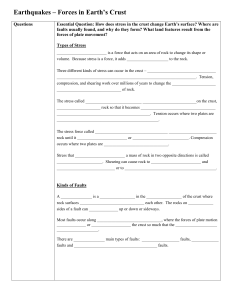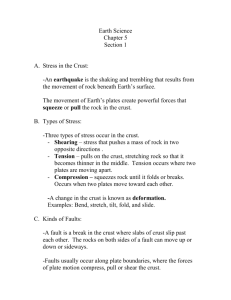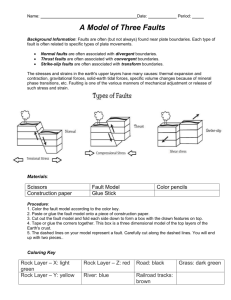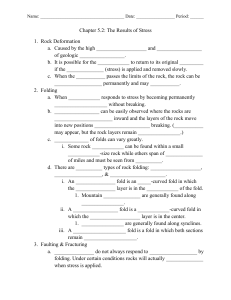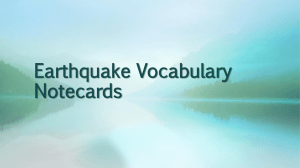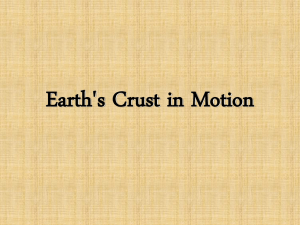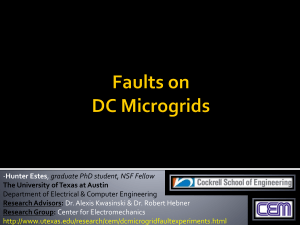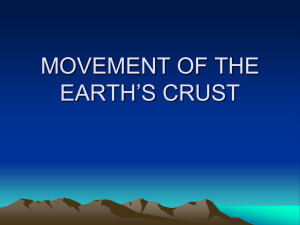Earth`s Crust in Motion
advertisement
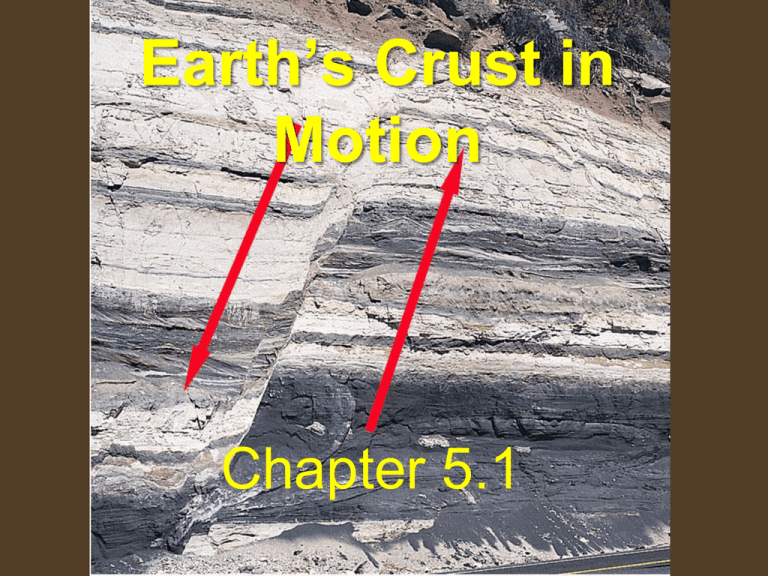
Earth’s Crust in Motion Chapter 5.1 What is an earthquake? What causes earthquakes? • Earthquake: The shaking and trembling that comes from the movement of rock beneath Earth’s surface. • When the tectonic plates of Earth’s lithosphere move they cause stress on the crust. What is stress? • Stress: A force that acts on rock to change its shape or volume. Stress adds energy to the rock. How does it Create earthquakes? • Stress builds up until there is enough energy to overcome the friction, and the land shifts. • The more energy built up, the bigger the quake. • What is Friction • Friction is the force that opposes the motion of one surface as it moves across another surface. Friction exists because surfaces are not perfectly smooth. • Rocks move along a fault depending on how much friction there is between opposite sides of the fault. • How_Does_Plate_Movement_Gener ate_Earthquakes • Three Types of Stress Are there • Shearing , Tension and Compression different types of stress? What are they? • Shearing Pushes a mass of rock in two opposite directions. Rock breaks, slips apart or changes its shape. • Tension Pulls on the crust, stretching rock so that it becomes thinner in the middle. It occurs where two plates are moving apart. • Stress video Compression • Squeezes rock until it breaks. One plate pushing on another compresses rock like a trash compactor. • What are faults? Where do they occur? • Faults • Fault: A break in Earth’s crust where slabs of crust slip past each other. Faults occur when enough stress builds up in rock to make it break. • Describe and • Three Types of Faults draw the • 1) Strike Slip Faults three types • Found at transform boundaries of Faults. • The rocks on either side of the fault slip past each other sideways with little up or down motion • Ex: San Andreas Fault. strike slip video strike-slip fault animation • What is the • difference • between a • hanging wall and a footwall? • normal fault animation Normal Faults Found at divergent boundaries. Tension forces in Earth’s crust cause normal faults. The fault is at an angle, so one block of rock lies above the fault while the other block lies below the fault. There is up and down motion. • • Hanging Wall lies above Footwall lies below Normal Fault Animation • • • Reverse Faults. Found at convergent boundaries The same structure as a normal fault, but the blocks move in the opposite direction. The rock forming the hanging rock slides UP & OVER the foot wall. reverse fault animation Fault animation more animation More Animation Type of Stress Type of Plate Boundary Type of Fault
